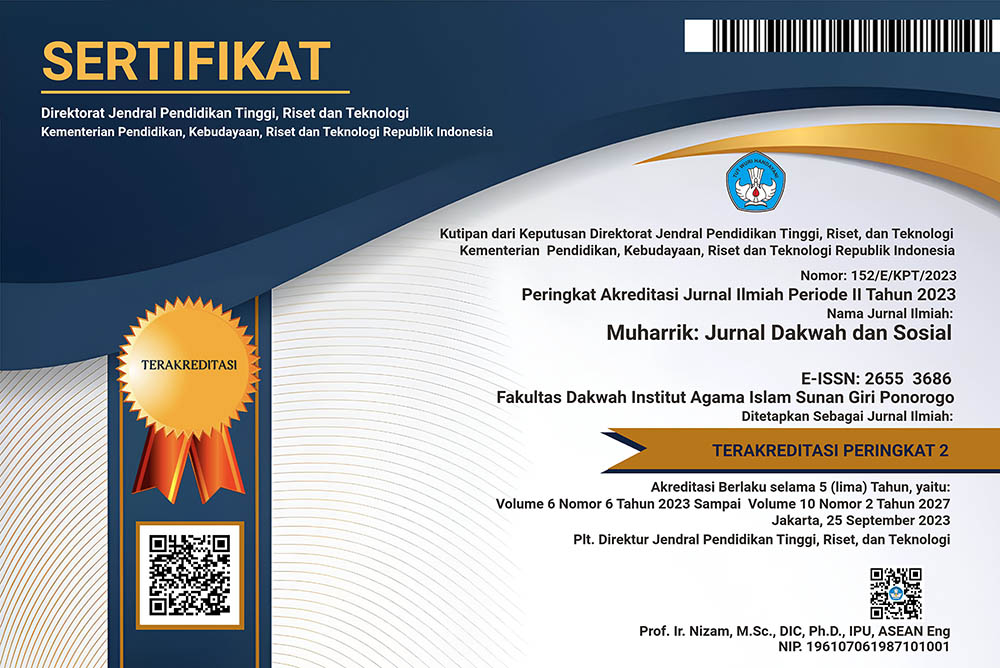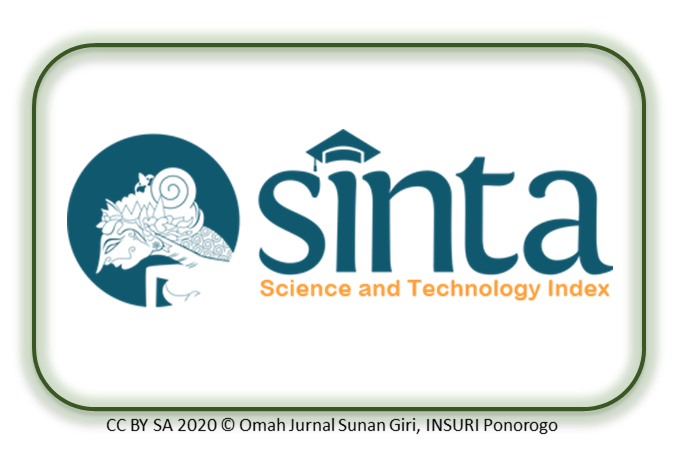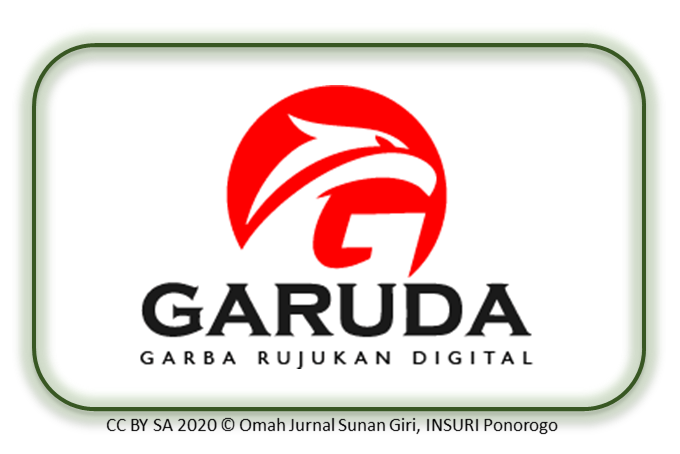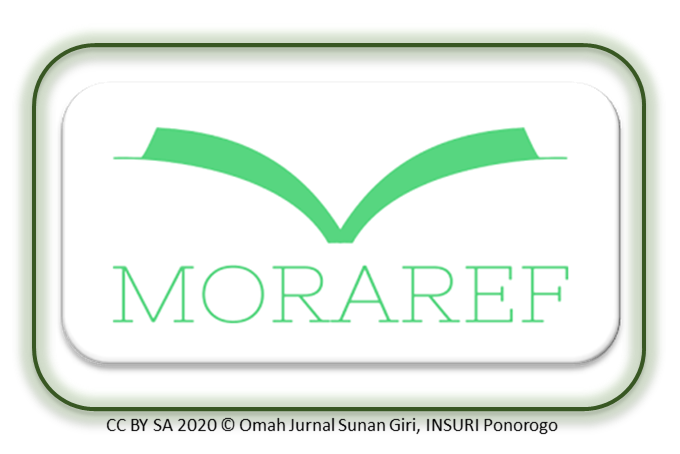Da’wah in the Algorithmic Era: Investigating Bias and Validity of Islamic Artificial Intelligence Applications
DOI:
https://doi.org/10.37680/muharrik.v8i2.7730Keywords:
Islamic AI, Da’wah, Algorithmic BiasAbstract
The emergence of Islamic AI applications represents a pivotal transformation in the mediation of daʿwah. Yet, it raises pressing concerns about bias, epistemic validity, and the absence of recognized religious authority. This study examines ChatMu GPT and MuslimAI.ai, two prominent platforms with distinct theological orientations, to evaluate how they address religious questions framed within Indonesia's four indicators of religious moderation across the domains of message of da'wah, such asʿaqīdah (creed), ʿibādah (worship), and muʿāmalah (social ethics). Using qualitative content analysis and drawing on Algorithmic Bias Theory, six prompts were designed to test inclusivity, doctrinal balance, and ethical framing. Findings reveal that ChatMu GPT consistently grounds responses in Muhammadiyah doctrinal sources, producing structured but institutionally aligned guidance, while MuslimAI.ai prioritizes emotional inclusivity and accessibility at the expense of jurisprudential depth. Both exhibit limited transparency of sources and potential algorithmic bias. These results suggest that while Islamic AI can enhance accessibility to religious knowledge, its unsupervised use risks narrowing interpretive diversity. The study recommends hybrid AI models supervised by qualified ʿulamāʾ, trained on pluralistic datasets, and aligned with Islamic ethical principles of ṣidq (truthfulness), amānah (trustworthiness), and maṣlaḥah (public good) to preserve the integrity of digital daʿwah.
Downloads
References
Abadalhady, W., Jasim, H. I., Abdulreda, S. K., & Khaled, I. S. (2025). Artificial Intelligence from an Islamic Perspective: Communication Applications as an Example. In A. Abdelgawad, A. Jamil, & A. A. Hameed (Eds.), Intelligent Systems, Blockchain, and Communication Technologies (Vol. 1268, pp. 157–166). Springer Nature Switzerland. https://doi.org/10.1007/978-3-031-82377-0_14
Ahmad Naufa. (2023). Tantangan NU dan Pesantren di Tengah Perkembangan AI. NU Online. https://www.nu.or.id/nasional/tantangan-nu-dan-pesantren-di-tengah-perkembangan-ai-lc9gH
Al Kubaisi, A. A. S. H. (2024). Ethics of Artificial Intelligence a Purposeful and Foundational Study in Light of the Sunnah of Prophet Muhammad. Religions, 15(11), 1300. https://doi.org/10.3390/rel15111300
Al-Badani, G., & Alsubari, A. (2024). Evaluating Artificial Intelligence Bias In Answering Religious Questions. 2024 4th International Conference on Emerging Smart Technologies and Applications (eSmarTA), 1–7. https://doi.org/10.1109/eSmarTA62850.2024.10638857
antaranews.com. (2024, January 19). Wapres: Kecanggihan AI tak bisa ganti peran ulama terbitkan fatwa. Antara News. https://www.antaranews.com/berita/3923820/wapres-kecanggihan-ai-tak-bisa-ganti-peran-ulama-terbitkan-fatwa
Artificial Intelligence (AI) in Indonesia. (2024). Statista. https://www.statista.com/topics/12740/artificial-intelligence-ai-in-indonesia/
Ashraf, C. (2022). Exploring the impacts of artificial intelligence on freedom of religion or belief online. The International Journal of Human Rights, 26(5), 757–791. https://doi.org/10.1080/13642987.2021.1968376
Aziz, M. A. (2009). Ilmu Dakwah. Kencana Prenadamedia.
Bunt, G. R. (2018). Hashtag Islam: How cyber-Islamic environments are transforming religious authority. UNC Press Books.
Campbell, H. (2017). Religious communication and technology. Annals of the International Communication Association, 41, 1–7. https://doi.org/10.1080/23808985.2017.1374200
ChatMu GPT. (2025). https://chatgpt.com
Erdy Nasrul. (2023, February 20). Muhammadiyah Harus Manfaatkan AI untuk Kuatkan Dakwah. Republika Online. https://republika.co.id/share/rqcknd451
Fakhruroji, M. (2019). Digitalizing Islamic lectures: Islamic apps and religious engagement in contemporary Indonesia. Contemporary Islam, 13(2), 201–215. https://doi.org/10.1007/s11562-018-0427-9
Fuji E Permana. (2021, March 5). Kaitan Artificial Intelligence dan Dakwah Islam. Republika Online. https://republika.co.id/share/qphh3o430
Gorian, E., & Osman, N. D. (2024). Digital Ethics Of Artificial Intelligence (Ai) In Saudi Arabia And United Arab Emirates. Malaysian Journal of Syariah and Law, 12(3), Article 3. https://doi.org/10.33102/mjsl.vol12no3.798
Hidayat, A., Shobirin, M., & Wijaya, A. P. (2023). Usability Measurement of Aswaja Chatbot with System Usability Scale (SUS). 2023 Eighth International Conference on Informatics and Computing (ICIC), 1–5. https://doi.org/10.1109/ICIC60109.2023.10381914
Iqbal, M., & Ali, M. (2024). Performance Evaluation Of Islamic Artificial Intelligence In The Muslim Pro Application: A Systematic Review. International Conference on Education, Science, Technology and Health (ICONESTH), 22–33. https://doi.org/10.46244/iconesth.vi.296
Katadata.co.id. (2023). Survei: ChatGPT Jadi Aplikasi AI Paling Banyak Digunakan di Indonesia. https://databoks.katadata.co.id/index.php/infografik/2023/06/26/survei-chatgpt-jadi-aplikasi-ai-paling-banyak-digunakan-di-indonesia
Kemenag RI. (2019). Moderasi Beragama. Kementerian Agama RI. https://pendispress.kemenag.go.id/index.php/ppress/catalog/view/3/1/9-1
Latifi, H. (2024). Challenges of Using Artificial Intelligence in the Process of Shi’i Ijtihad. Religions, 15(5), 541. https://doi.org/10.3390/rel15050541
Mukherjee, A., Kulshrestha, J., Chakraborty, A., & Kumar, S. (Eds.). (2023). Ethics in Artificial Intelligence: Bias, Fairness and Beyond (Vol. 1123). Springer Nature. https://doi.org/10.1007/978-981-99-7184-8
Muslim AI. (2025). Muslim AI. Muslim AI. https://muslimai.ai
Naeem, M., Smith, T., & Thomas, L. (2025). Thematic Analysis and Artificial Intelligence: A Step-by-Step Process for Using ChatGPT in Thematic Analysis. International Journal of Qualitative Methods, 24, 16094069251333886. https://doi.org/10.1177/16094069251333886
Nawi, A., Yaakob, M. F. M., Ren, C. C., Khamis, N. Y., & Tamuri, A. H. (2021). A Preliminary Survey of Muslim Experts’ Views on Artificial Intelligence. Islāmiyyāt, 43(2), Article 2. http://ejournal.ukm.my/islamiyyat/article/view/52117
Pintak, L., & Setiyono, B. (2011). The Mission of Indonesian Journalism: Balancing Democracy, Development, and Islamic Values. The International Journal of Press/Politics, 16(2), 185–209. https://doi.org/10.1177/1940161210391784
Reed, R. (2021). A.I. in Religion, A.I. for Religion, A.I. and Religion: Towards a Theory of Religious Studies and Artificial Intelligence. Religions, 12(6), 401. https://doi.org/10.3390/rel12060401
Samuel-Azran, T., Manor, I., Yitzhak, E., & Galily, Y. (2024). Analyzing AI Bias: The Discourse of Terror and Sport Ahead of Paris 2024 Olympics. American Behavioral Scientist, 00027642241261265. https://doi.org/10.1177/00027642241261265
Singler, B. (2024). Religion and Artificial Intelligence: An Introduction (1st ed.). Routledge. https://doi.org/10.4324/9781003256113
Singler, B., & Watts, F. (Eds.). (2024). The Cambridge Companion to Religion and Artificial Intelligence (1st ed.). Cambridge University Press. https://doi.org/10.1017/9781009031721
Trotta, S., Iannotti, D. S., & Rähme, B. (2024). Religious Actors and Artificial Intelligence: Examples from the Field and Suggestions for Further Research. Religion and Development, 1–25. https://doi.org/10.30965/27507955-20230027
Tsuria, R., & Tsuria, Y. (2024). Artificial Intelligence’s Understanding of Religion: Investigating the Moralistic Approaches Presented by Generative Artificial Intelligence Tools. Religions, 15(3), 375. https://doi.org/10.3390/rel15030375
Vestrucci, A. (2022). Artificial intelligence and in god’s existence: Connecting philosophy of religion and computation. Zygon®, 57(4), 1000–1018. https://doi.org/10.1111/zygo.12829
Downloads
Published
How to Cite
Issue
Section
License
Copyright (c) 2025 Asna Istya Marwantika, Kazeem Oluwaseun Dauda

This work is licensed under a Creative Commons Attribution-NonCommercial 4.0 International License.
The author(s) retain/s the copyright and grant/s Muharrik: Jurnal Dakwah dan Sosial the first publication rights licensed under the Creative Commons Attribution-NonCommercial 4.0 International (CC BY-NC 4.0) , which allows others to access (search, read, download and quote), share (copy and redistribute the material in any media or format) and adapt (mix, modify and develop) works for legitimate non-commercial purposes, with recognition of the authorship of the work and its initial publication in this journal.












